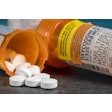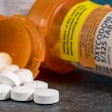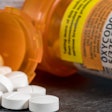
The U.S. Food and Drug Administration (FDA) took a somewhat unprecedented action regarding the retail packaging of a popular over-the-counter (OTC) antidiarrheal product.
In a January 30 statement, the agency expressed concern that the misuse and abuse of loperamide contributes to the death toll associated with the opioid epidemic.
 Tom Viola, RPh.
Tom Viola, RPh.Loperamide is a synthetic opioid approved by the FDA for treating diarrhea. It acts on opioid receptors in the gastrointestinal system to slow peristalsis and decrease the number of bowel movements. This is one of the reasons opioid analgesics frequently cause constipation.
Loperamide is sold under the OTC brand name Imodium A-D (Johnson & Johnson) but is also available in generic and store-brand versions.
What is the relevance to you as a dental practitioner? You may want to consider loperamide toxicity in patients presenting with unexplained cardiac problems, including QT interval prolongation, torsades de pointes, or other ventricular arrhythmias. This is especially applicable for patients who may be receiving local anesthetic agents with epinephrine.
The QT interval is a measure of time in the heart's electrical cycle, while torsades de pointes is a ventricular tachycardia in patients with a long QT interval.
Safe as directed?
The FDA maintains that loperamide is safe when used as directed. The maximum approved daily dose for adults is 8 mg per day for OTC use and 16 mg per day when prescribed. If diarrhea persists for more than two days, the FDA recommends that loperamide be discontinued and a healthcare professional should be contacted.
However, loperamide may be used by some individuals at very high doses to self-manage opioid withdrawal symptoms or achieve the euphoric effects typical of opioid use. When large doses are taken, serious adverse effects may occur, including severe heart rhythm problems and death. Like other medications, large doses of loperamide also have been used in suicide attempts. Interestingly, routine urine opioid screens do not typically detect loperamide.
“Loperamide may be used by some individuals at very high doses to self-manage opioid withdrawal symptoms.”
Unfortunately, the risk for adverse cardiac effects may also be increased when high doses of loperamide are taken with medications such as the antibacterial clarithromycin, antifungals itraconazole and ketoconazole, and antiretroviral medication ritonavir.
Loperamide abuse has been increasing in the U.S., according to a 2016 study in Annals of Emergency Medicine (November 2016, Vol. 69:1, pp. 73-78).
The study found that reports of loperamide abuse to poison control centers nearly doubled from 2010 to 2015, with an average of 38 new cases a year. While approximately half of the reports involved suicidal intent, most of the remainder involved intentional abuse or misuse. During this time frame, 15 deaths were reported, of which eight involved single-agent loperamide abuse.
This issue is not new. In 2016, the FDA issued a Drug Safety Communication in which it warned that high doses of loperamide can result in serious cardiac events, including arrhythmias and cardiac arrest. The agency also noted that these events tend to occur in people who are misusing the drug for its opioid effects.
After the 2016 communication, the manufacturer added warnings about potential serious heart problems to the drug label of both prescription loperamide and OTC loperamide products.
However, despite these steps, the FDA continues to receive reports of serious heart problems and deaths with loperamide use, primarily among people who are intentionally misusing or abusing the drug, according to the recent statement.
Blister pack
To reduce the number of reports of cardiac problems and deaths in people using higher-than-recommended doses of loperamide, the FDA has sought to enlist the help of manufacturers to change the retail packaging of OTC loperamide.
The FDA is requesting that manufacturers of OTC loperamide "change the way they label and package these drugs to stem abuse and misuse that leaves us deeply concerned," stated FDA Commissioner Scott Gottlieb, MD.
To foster safe use of the product, the FDA is requesting that these manufacturers use blister packs or single-dose retail packaging.
Interestingly, Dr. Gottlieb highlighted the relevance of the FDA's ongoing efforts to reduce opioid misuse and abuse by referencing the dentistry.
"Suppose the dental community developed an expert guideline that said that no routine dental procedure should require more than a three- or five-day initial fill of an immediate-release opioid, and the FDA reviewed and determined that blister packs in these quantities were necessary to ensure safe use," Gottlieb stated. "If the drugs were then packaged in blister packs that comported with these durations of use, it could help reduce overall dispensing."
Tom Viola, RPh, is a clinical educator, professional speaker, and published author in the areas of oral pharmacology and local anesthesia. For more information on this and other pharmacology topics, as well as a list of dates and locations where you can attend his latest seminars, visit his website at www.tomviola.com.
The comments and observations expressed herein do not necessarily reflect the opinions of DrBicuspid.com, nor should they be construed as an endorsement or admonishment of any particular idea, vendor, or organization.



















